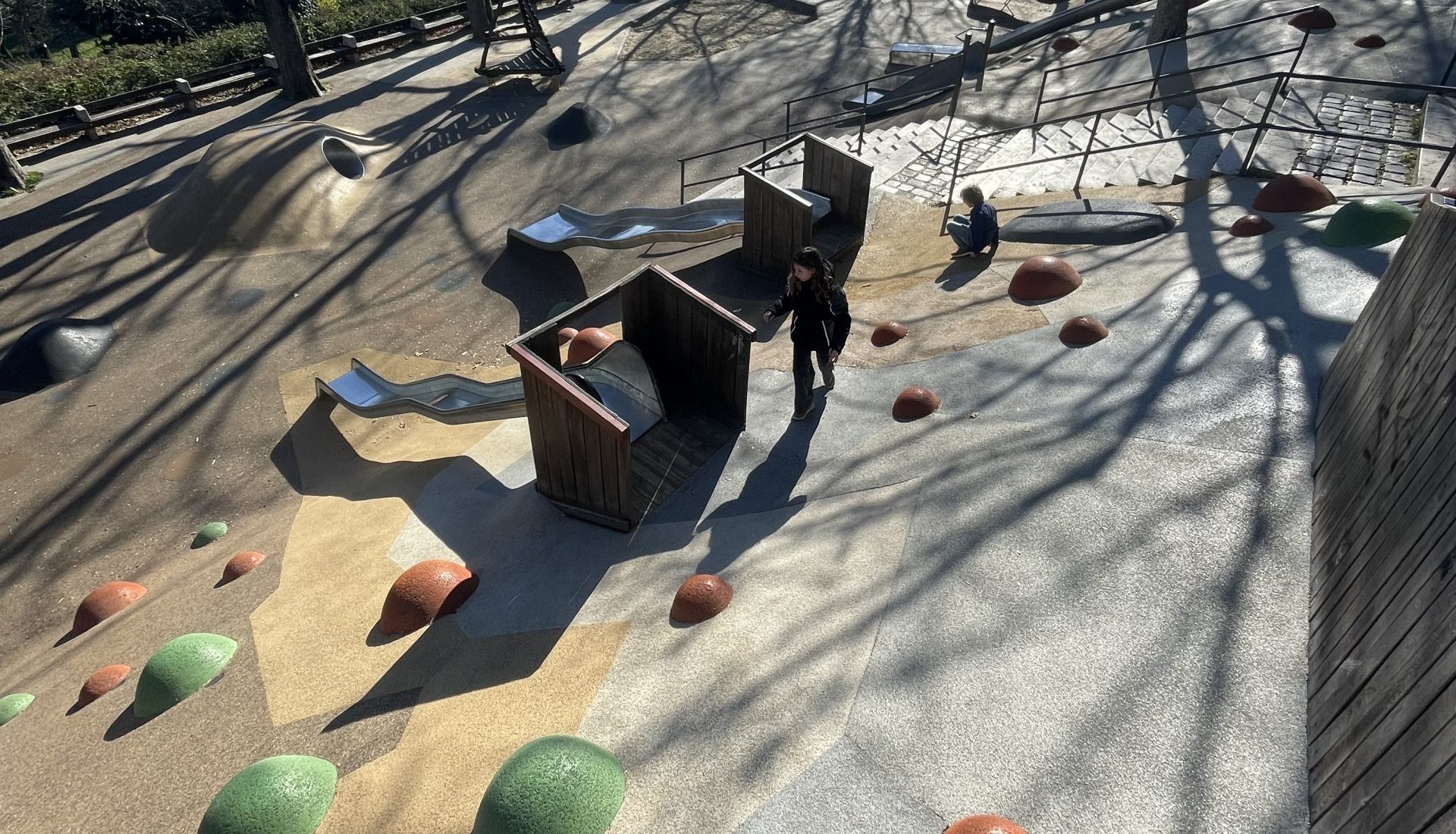What makes a playground? Is it defined by its boundaries, its equipment, or the laughter of children that fills its air? The concept of a playground is far more complex than the slides and swings that often come to mind. Playgrounds are cultural artifacts – spaces that mirror the societies that create them, embodying their values, anxieties, and hopes for the future. They are living landscapes, dynamic and ever-changing, shaped by the needs of the communities which use them. Yet this simple idea of a playground – a place for play – has profound implications for our view of children, society and even ourselves.
The history of the playground is a story of human connection, creativity and adaptability to ever- changing environments. From pristine sandbanks, forest glades and village squares of yesteryear, playgrounds have evolved into inclusive, multi-functional environments and play worlds that meet the diverse needs of children and adults alike. In the industrial age, it became an instrument of control, a fenced-in space where children could safely exercise their bodies while developing their morals under watchful eyes. But today, playgrounds are experiencing a renaissance – a return to their roots as open spaces for exploration and imagination,
no longer confined by rigid structures or narrow definitions.
If we look closely, we can see that playgrounds don’t have to be just for children. They can be, and perhaps are already becoming, vibrant social ecosystems, spaces where people of all ages and backgrounds come together. We can create spaces not just for running, climbing or swinging – but also for sitting, talking, dancing and socializing. It thrives on movement and creativity, offering unexpected moments of joy and shared experience.
It is as much about what happens outside the design as inside it.
Perhaps this evolution challenges us to rethink the very definition of a playground. Could a playground be anywhere that movement, spontaneity, and connection exist? Could it be a busy square, a quiet park, or even a parade winding through the streets? The playground might not need slides or swings to fulfill its purpose. It might not even need children. But it most certainly needs people. It might simply be a living, breathing landscape shaped by the people who dwell in it –
a canvas for community, a stage for creativity, and a space for the unexpected.
As playgrounds continue to evolve, maybe it’s time to ask a deeper question: Are they truly spaces for children, or are they a reflection of the societies we want to build? Perhaps the playground of the future is not a place but a concept – a dynamic ecosystem where movement, diversity, and imagination come together to create a new part of landscape. Could it be that the playground’s greatest potential lies not in its boundaries, but in its openness to possibility? This openness reminds us that play is not just an activity – it is a way of being and living, and the playground is its ultimate expression.

